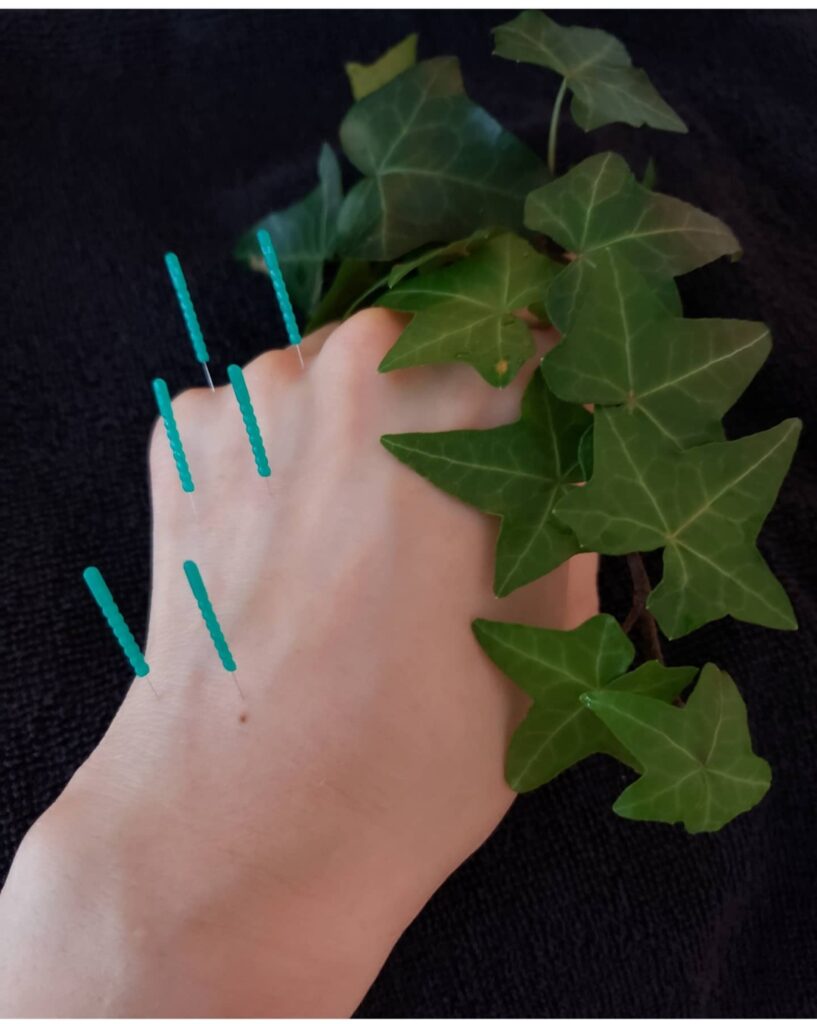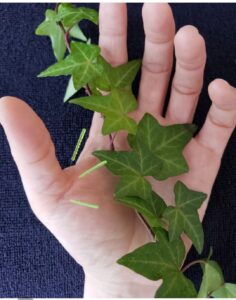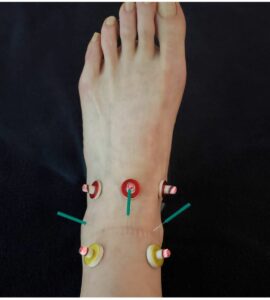肘部管症候群 小指と薬指のしびれ
Numbness of hands and fingers
手の小指と薬指にだけしびれが起こる「肘(ちゅう)部管症候群」は、ひじを通る神経の障害が原因ですひじには「尺骨神経」という太い神経があり、ひじの内側にある、筋肉や骨に囲まれたじん帯の中の「肘部管」という空間を通っています。尺骨神経は、小指と薬指の指先まで伸びていて、小指と、薬指の小指側の感覚をつかさどっています。
肘部管症候群では、何らかの影響でひじが変形するなどして、肘部管の内部で尺骨神経が圧迫されることで、小指と薬指がしびれたり、感覚が鈍くなったりします。そのままにしていると、指の感覚がほとんどなくなり、指先に力が入らなくなっていきます。肘部管症候群は、長年、ひじを酷使してきた人に起こりやすいと言われています。ひじを酷使し続けると、やがてひじの骨にとげや出っ張りができたり、ひじ周辺の筋肉が発達したりすることで、肘部管の中の尺骨神経が圧迫されます。
具体的には、手や腕を酷使する職業の人、子どものころなどにひじを骨折したり、けがをしたことがある人に起こりやすくなります。テニスや野球、柔道など、スポーツ選手にも多くみられます。また、骨や関節は加齢によって変形しやすくなるため、加齢に伴い発症しやすくなります。特に、中高年に多くみられます。肘部管症候群がある人は、ひじを曲げた姿勢を続けると、しびれが強くなります。ひじを曲げると、尺骨神経が伸ばされ、尺骨神経への圧迫が強くなるためです。
尺骨神経は、小指と、薬指の小指側の感覚のほか、手指の根元の筋肉の運動をつかさどる神経にも関係しています。そのため、尺骨神経が圧迫されると、手指をうまく動かせなくなっていくのです。れに伴い、手指の根元の筋肉がやせ、さらには手が全体的にやせていきます。肘部管症候群は、そのままにしていると神経の傷みが進行するため、やがて小指と、薬指の小指側の感覚がほとんどなくなります。また、手指を使う細かい作業が難しくなり、日常生活にかなりの支障をきたすようになります。一般的に神経の回復は1日1mmとされています。神経の障害が始まったひじから指先まではかなり距離があるので、回復には数年かかります。重度の場合は完全に治すことが困難になります。
鍼灸治療では、手・指のしびれの症状に対して、しびれの緩和、血行促進をします。鍼灸での血管拡張により血流量が増大、局所の体温上昇に作用し、内因性発痛物質の除去や、患部の鎮静鎮痛、血流不良による痛みの改善および、神経筋損傷組織の回復促進に作用します 。
The elbow has a large nerve called the ulnar nerve, which runs through the elbow in a space called the elbow canal, inside the elbow, in the ligament surrounded by muscle and bone. The ulnar nerve extends to the tips of the little and ring fingers, and is responsible for sensation in the little finger and on the little finger side of the ring finger.
In elbow canal syndrome, the ulnar nerve is compressed inside the elbow canal due to some kind of elbow deformity, which causes numbness and loss of sensation in the little finger and ring finger. If left untreated, the fingers lose most of their sensation and strength in the fingertips. Elbow tube syndrome is said to be more likely to occur in people who have overused their elbows for many years. Continued overuse of the elbow can eventually lead to thorns and protrusions in the elbow bone and the development of muscles around the elbow, which can cause pressure on the ulnar nerve in the elbow canal.
More specifically, it is more likely to occur in people with occupations that involve heavy use of the hands and arms, and in people who have had a fracture or injury to the elbow, for example as children. It is also common in tennis, baseball, judo and other sports players. It is also more likely to occur with age, as bones and joints tend to deform with age. It is particularly common in middle-aged and older people. People with elbow-tube syndrome experience increased numbness if they continue in a bent elbow position. This is because bending the elbow stretches the ulnar nerve and increases pressure on it.
The ulnar nerve is involved in the sensation in the little finger and the little finger side of the ring finger, as well as in the nerves responsible for the movement of the muscles at the base of the fingers. Therefore, when the ulnar nerve is compressed, the fingers cannot be moved properly. As a result, the muscles at the base of the fingers become thin and the hand as a whole becomes emaciated. If left untreated, elbow-tube syndrome can lead to progressive nerve damage, so that eventually the little finger and the little finger side of the ring finger lose most of their sensation. It also makes it difficult to do fine work with the fingers, which can be a considerable hindrance to daily life. Generally, nerve recovery is estimated at 1 mm per day. As there is a considerable distance from the elbow to the fingertips where the nerve damage begins, recovery can take several years. In severe cases, it can be difficult to heal completely.
Acupuncture treatment relieves numbness and promotes blood circulation for symptoms of numbness in the hands and fingers. Acupuncture increases blood flow and local body temperature by dilating blood vessels, eliminating endogenous pain-producing substances, calming and analgesia of the affected area, improving pain caused by poor blood flow and promoting recovery of neuromuscular damaged tissue.



